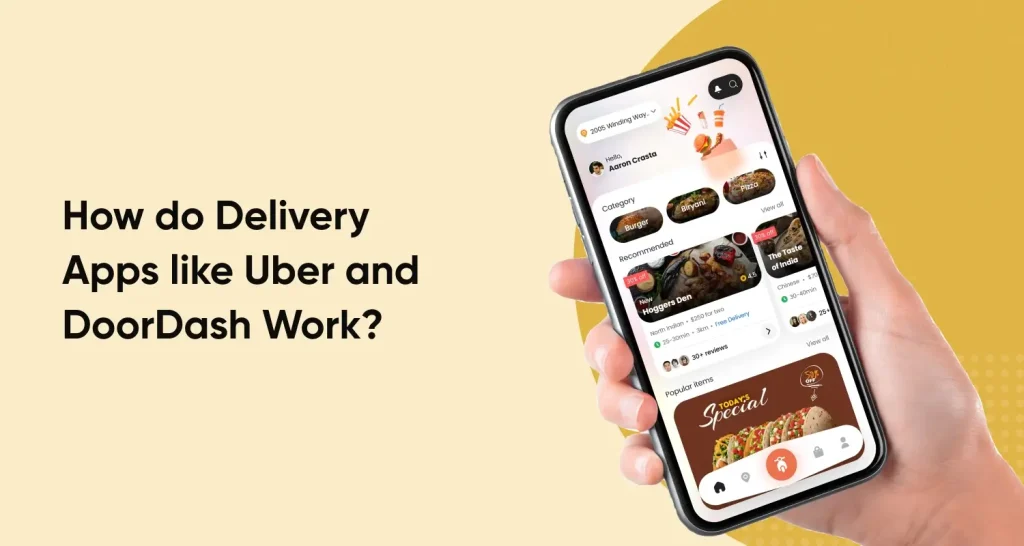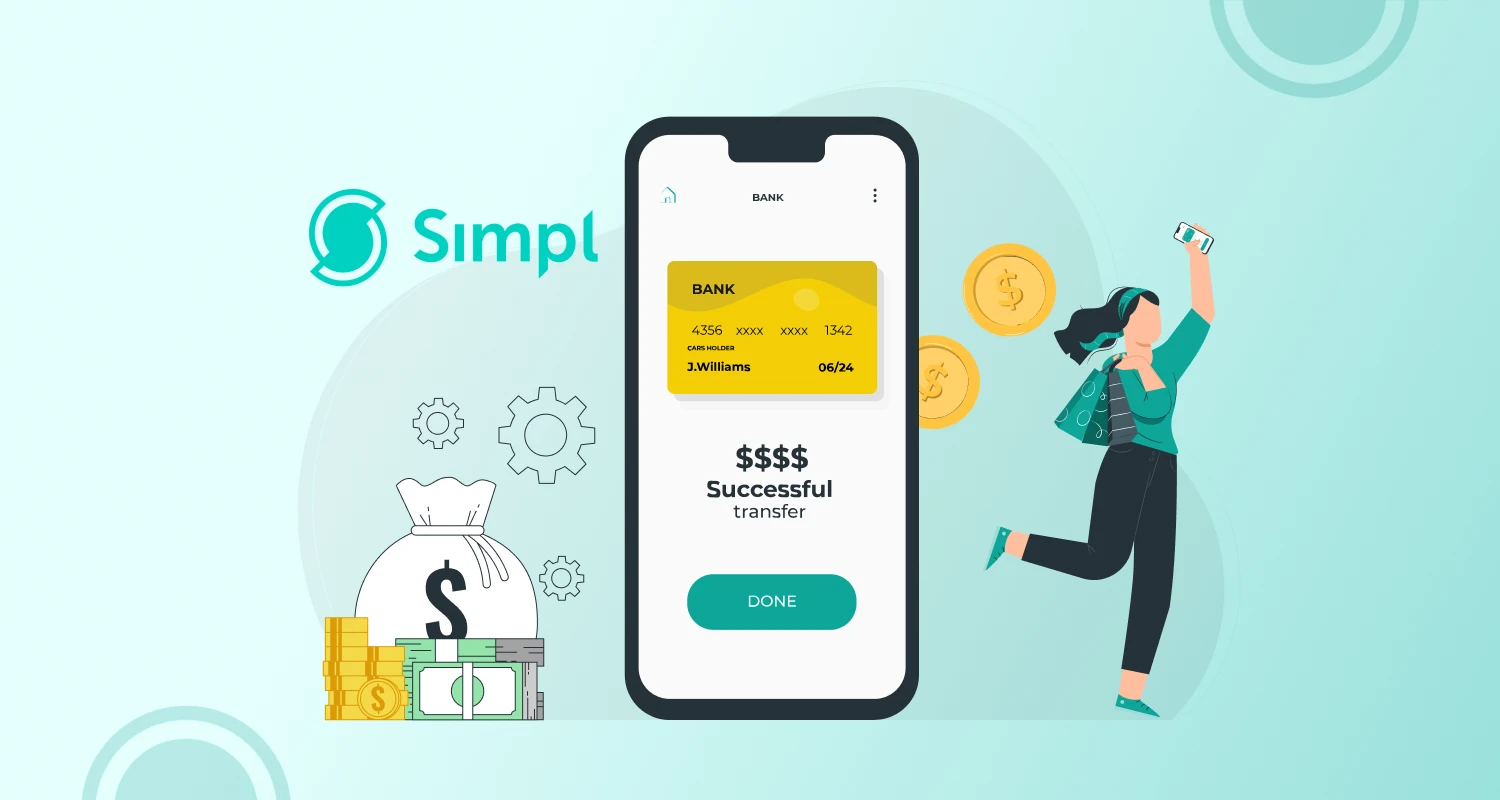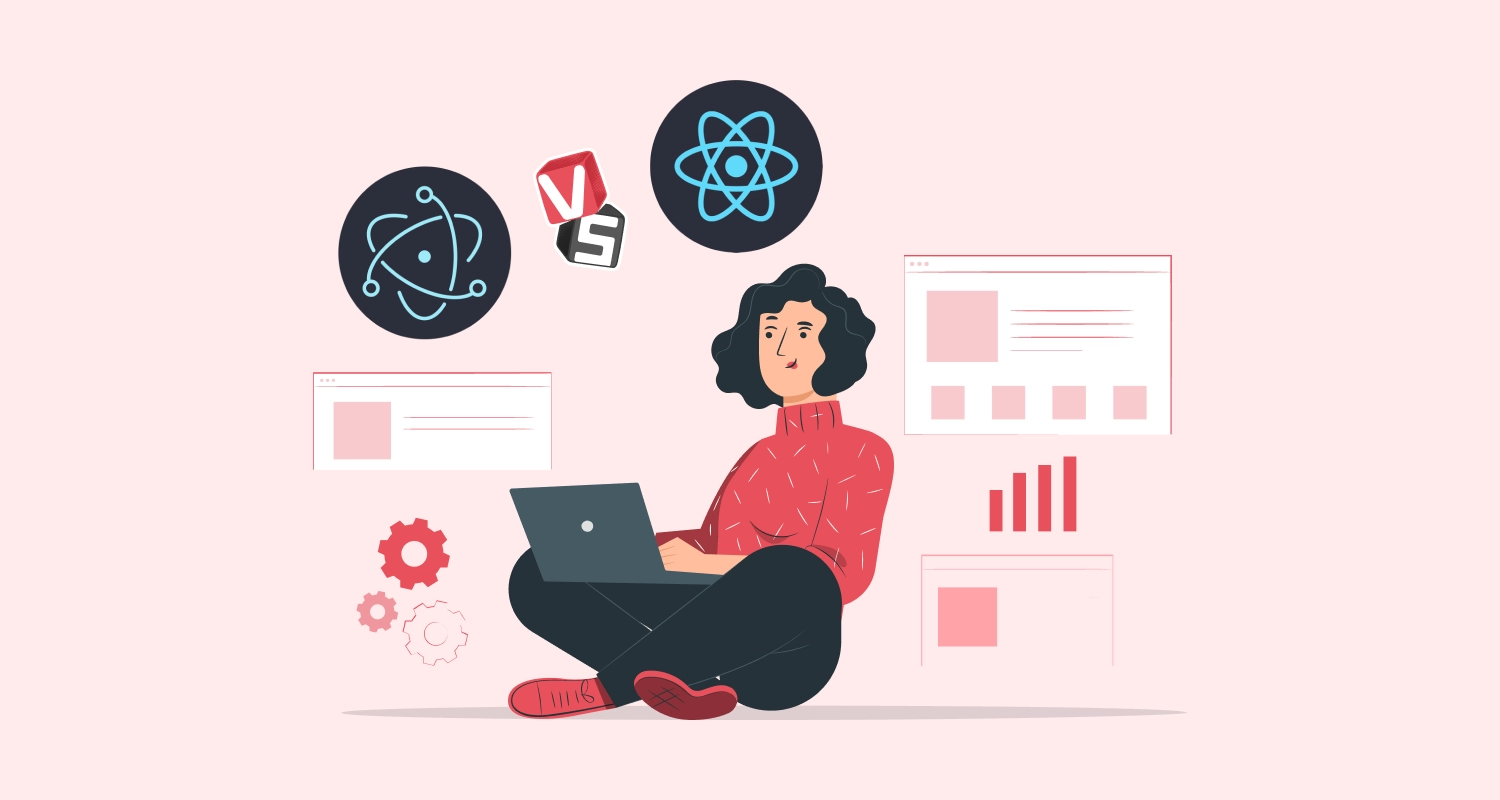Have you noticed how popular on-demand delivery applications are becoming? Businesses like Uber, Bolt, DoorDash, Postmates, and Lyft have seen a substantial increase in revenue during the pandemic, more than doubling it. According to Statista, the platform-to-consumer delivery industry has generated an astounding $70,741 million in sales.
You now have the ability to access a variety of expert services and products 24/7, right at your fingertips, thanks to on-demand delivery apps. Whether you want a wonderful dinner, need new clothing, need a maid’s help, or even a dog walker, all it takes is a simple click.
It’s like having a personal concierge at your disposal at all times. Amazing, isn’t it? We will be providing some helpful tips on on-demand delivery app development in this blog, going through the advantages it can have for your company, and offering advice on how to create an app with the help of an on-demand app development company that exceeds users’ expectations.
How do Delivery Apps like Uber Eats and DoorDash Work?

You might be curious about the success of on-demand delivery services like Uber Eats and DoorDash as well as how they operate. Let’s dive in and discover the beauty that lies beneath these well-known platforms!
Delivery apps function in a way that is similar to how Uber does. By the way, you can always refer to our comprehensive guide if you’re curious to find out more about the steps, features, and price of developing an app similar to Uber.
It’s crucial to remember that on-demand delivery applications aren’t just for food delivery. On-demand services cover a wide range of industries, including fashion, retail, healthcare, and many more. An on-demand delivery app is essentially a piece of software that lets customers request products and services.
These apps include a client interface where you can easily choose and order the things you want, a merchant interface for receiving and managing orders, and a platform for couriers to accept delivery requests.
On-demand delivery apps’ success depends on their capacity to forge lasting connections with businesses and provide top-notch services. These apps serve as an example of how businesses may accommodate their clients’ tastes and wants.
Let’s look at some important elements that these apps’ success depends on:
On-demand delivery apps place a high priority on simplicity and user-friendliness. Users can easily navigate and place orders because to their intuitive interface design.
Solution-Oriented Design: These apps were created with the express purpose of resolving user issues. They strive to make the lives of their clients easier, whether it is through the ease of having food delivered to your door or having access to a broad variety of things with only a few taps.
Depending on the sort of customer, there are different groups that on-demand delivery apps can be placed into:
Business-to-Consumer (B2C) or Enterprise-to-Person (E2P) apps manage the distribution of goods from companies to customers. Examples of well-known delivery services are Starbucks and McDelivery.
B2B apps enable business-to-business (B2B, or enterprise-to-enterprise, E2E) deliveries. Apps like Cargomatic, for instance, which is sometimes referred to as the “Uber for truckers,” connect businesses with dependable carriers for effective product transportation.
Consumer-to-Consumer (C2C, or Person-to-Person, P2P) apps let users buy and sell goods and services directly to and from one another, fostering a healthy market. Examples of such apps include Etsy and eBay.
Exploring the various business categories in which the app might be used is crucial when deciding how to design a delivery app. Here are a few illustrations:
The alternatives for renting a car on on-demand platforms like Turo and easyCar include booking them by the hour, 24-hour roadside assistance, and on-demand pick-up or drop-off services.
Users can connect with experts who can offer cleaning services and other types of assistance whenever needed through home services apps like Handy and TaskRabbit.
Businesses may plan on-demand transportation and track shipments in real-time with the assistance of logistics and transportation apps like Uber Freight and Uber Deliver.
Therefore, even if you believe that developing an on-demand delivery app is not a good fit for your company, you can be surprised by how it can improve your operations and have an impact on your entire sector.
Hire mobile app developers who specialize in this field if you’re interested in building an on-demand delivery app for your company. They have the knowledge and practical experience required to turn your idea into a fully functional, user-friendly app that exceeds your target market’s expectations.
Unique Selling Points of On-Demand Delivery Apps
What distinguishes courier applications from its competitors and what features actually contribute to their success? When thinking about how to build a delivery app, this is a crucial question to ask.
Our team has offered an analysis of the key selling features of the most well-known on-demand delivery applications as part of our business analysis services in order to provide answers to these queries.
| Service Apps | Unique Selling Point (USP) |
| UPS | Voice search integration- one-click order and automatic payment- shipment and delivery notifications- compare items for better search |
| Amazon Flex | Improved filters for specialized food ordering and scheduling- online meal preparation and delivery tracking- share info or instructions online for deliveries Tracking of meal preparation and deliveries |
| DoorDash | Multiple payment options- Reward options- Up to 30-minute delivery- Scheduling- Membership program for free delivery- Intuitive interface |
| Deliveroo | Improved search for food- Saved locations- Geo-targeting shows the exact location of the restaurants- Automatic check-out with pre-filled details of the customers |
| goPuff | Save item list, wishlist based on purchase history- in-app chat for any queries- improved filters to select food- quick shopping- and group cart purchase |
| Grubhub | Live map to check the real-time location of drivers. In-app call facility- order tracking and scheduling |
| Instacart | Tracking- Multi-channel contact support- In-app chat |
| Uber Eats | Progress tracking- Simple scheduling |
| Gyft | E-gifts- Multiple payment options- Integration with thousands of retailers |

Technologies Used for On-Demand Delivery App Development
For the creation of an on-demand delivery app to go smoothly and effectively, the appropriate combination of technologies must be chosen. It guarantees quick development while keeping costs in check. Let’s explore the various technological elements needed to create a powerful on-demand delivery app.
Client-side (Front-End)
The client side, which roughly translates to the app’s user interface, refers to the components that end users interact with. The technologies most frequently used to create the front end of a unique app for iOS, Android, or the web platform are listed below:
- Swift, Objective-C, and SwiftUI for iOS Respond Native
- Kotlin, Java, and React Native for Android; HTML5, CSS, JavaScript, React.js, and Angular.js for the web.
You may design a user-friendly and visually appealing interface for your on-demand delivery app by utilizing these technologies.
Server-side (Back-End)
All of the app’s functions are carried out on the back end. It connects with databases and outside services, performs business logic, and processes data. In back-end development, the following technologies are frequently employed:
- Languages for programming: Java, PHP, Python, Ruby (preferred), Elixir, etc.
- Web frameworks: Phoenix, PostgreSQL, Ruby on Rails (recommended), PostgreSQL (preferred), MySQL
- Nginx (recommended), Apache, and cloud server platforms provided by Amazon Web Services (AWS) such as EC2, S3, etc.
You may create a dependable and scalable back-end architecture for your on-demand delivery app by utilizing these technologies.
APIs (Application Programming Interfaces) are essential for facilitating communication between the back-end and front-end components of an application. They also make it easier to incorporate outside services within your app. APIs specify how the various components of your app communicate with one another. RESTful APIs and GraphQL are two common technologies for developing APIs.
To sum up, a combination of front-end, back-end, and API technologies make up the technical stack for developing on-demand delivery apps. The most effective technology for each component should be used to enable a smooth and quick development process.
You may like this: Guide to Building a Food Delivery App Like EatClub
What is the Cost to Start an On-demand Delivery Business?
A variety of variables, such as the complexity of the features, the number of platforms targeted (Android, iOS, Web), the hourly rates of the software vendor, and the services included, might affect the cost of starting an on-demand delivery business app. The process for estimating the cost of developing an on-demand delivery app is identical to that used for estimating the cost of developing any other software or social media apps.
For one user app, either the courier app or the client app, the cost of producing a Minimum Delight Product (MDP), which is the initial working version of an on-demand delivery app, typically starts around $50,000 USD per platform (iOS, Android, or Web).
Consequently, the price to create the initial iteration of an on-demand delivery business might be as low as $20,000-$60,000 USD.
The on-demand economy sector has a huge investment potential. The impact of COVID-19 and statistical insights point to a rising need for prompt services and product delivery. The industry’s $57.6 billion in annual spending is anticipated to rise as consumer behavior continues to change.
How to Build a Delivery App and Launch Your Delivery Business?
Here is a list of important steps to do in order to give you thorough instructions on how to build a delivery app and launch your on-demand delivery business:
- Analyze the market and discover how potential customers behave.
- Decide on a certain service niche and define your target market.
- Complete your value proposition and plan to stand out from the competition.
- Establish the offline components of your on-demand delivery company, such as establishing legal specifications and taking into account loyalty programs.
- In order to ensure a trustworthy network, collaborate with service providers and couriers.
- Choose and work with a qualified IT vendor, or think about outsourcing mobile app development to nations like Ukraine, which has a good price-quality ratio.
- Early beginning, concentrate on marketing initiatives to raise awareness and draw customers.
- With the help of your IT vendor, create a perfect and user-friendly digital service.
- Read customer evaluations, pay attention to consumer feedback, and continually develop your delivery app based on user insights.
- To remain competitive and satisfy changing customer expectations, update and improve the quality of your on-demand delivery app on a regular basis.
Conclusion
Finally, it is true to state that an on-demand delivery app may change the game for any firm, regardless of its size. This is the reason why so many new businesses are entering this industry. If you also have plans to release your own on-demand apps, you should read this post because we have tried our best to give you the most accurate and thorough information. So why are you still waiting?
Simply get in touch with a reliable app development business to get your project going. Finally, if you found this essay useful.
Frequently Asked Questions
How Much Does It Cost to Develop an On-Demand Delivery App?
According to features, platforms, and development rates, the cost of creating an on-demand delivery app varies. A basic on-demand delivery app might start at around 30,000 to 45,000 USD per mobile platform., while a more complex app with advanced features could cost upwards of 55,000 to 91,000 USD or more.
How to Build a Delivery App?
To construct a delivery app, establish functionality, create a user-friendly interface, employ qualified developers, fully test, and launch with a marketing strategy.
How to Start a Delivery Service App?
Establish agreements with nearby companies or service providers, define your business model as an aggregator or full-service provider, and choose your market niche before launching a delivery service app.
What Are Some Examples of On-Demand Delivery Apps?
Apps for on-demand delivery include DoorDash, Postmates, and Uber Eats.


![On-Demand Delivery App Development [Features + Cost + Process]](https://blog.cdn.cmarix.com/blog/wp-content/themes/cmarixinternal/public/images/no-image.png)




